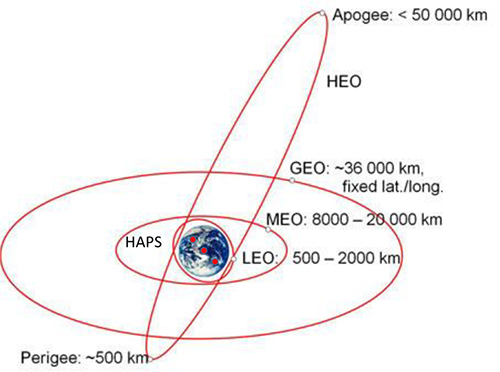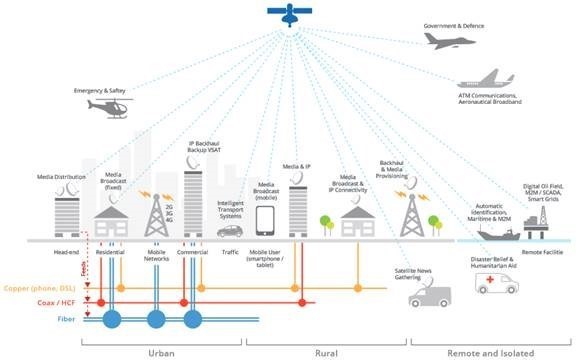If you haven’t heard the term Non-Terrestrial Network yet, you soon will, because it’s going to be essential to the implementation of next-generation 5G networks. 5G promises to enable users to access services anywhere, anytime with a peak data rate of up to 10Gbps. To provide seamless 5G coverage, ground-based 5G services will rely on space-based edge and fringe networks made up of geostationary (GEO) satellites, non-geostationary satellites (LEO, MEO, HEO) and High Altitude Platforms (HAPS).
The benefits of 5G are greater speed, lower latency and the ability to connect a lot more devices at once for internet of things devices and sensors. To get the planned multi-gigabit speeds, carriers will have to use the higher millimeter wave frequencies, where there are vast swathes of available spectrum.

The industry uses three main application scenarios in defining 5G systems: enhanced Mobile Broadband (eMBB); massive Machine Type Communication (mMTC); and Ultra Reliable Low Latency Communication (URLLC). The key in designing these systems is interoperability. Unlike traditional networks, 5G will require software definable network nodes that seamlessly transition between terrestrial wired networks, such as fiber, to terrestrial wireless networks for cell phones, to a fully integrated, space-based Non-Terrestrial Network.
At Maxar, we are helping pave the way for standards that will enable seamless interoperability between Non-Terrestrial Networks, ground terminals and the world’s largest wireless networks, all using millimeter wave frequencies. As 5G rolls out in major metropolitan areas, Non-Terrestrial Network systems will serve users outside of these regions as well as on planes, ships at sea and high-speed trains. The carriers and service providers that are able to fill the gaps with the speeds and capacity required for truly ubiquitous 5G will become the market leaders.

Unlike today’s satellite systems which connect to dedicated terminals, the new standards being developed will enable network operators to tap into the unique capabilities of non-terrestrial systems to meet demand in less populated regions and for service that requires mobility. Just like today, the actual hardware carrying communications will be irrelevant to both the network operator and the end user, bringing the promise of 5G connectivity around the globe.
We’re making great progress in reviewing the next-generation technologies that will provide low cost, small packaging and flexibility for the multi-platform networks that are envisioned. Recent developments include:
- A single entity defining 5G global standard the Third Generation Partnership Project (3GPP), which is the only globally recognized 5G standards body. We are participating at the global level as part of the 3GPP committees and making significant progress in defining the system architecture and the radio access network architecture in a global standard;
- Satellite access has been defined as part of the 5G system architecture, and it is enabling us to define satellite reference architectures to support the 5G applications. We are participating here at the regional level through IEEE and ATIS in roadmapping proposed architectures;
- Technology innovation and investment has been accelerating as ground technology moves forward, and we have a developing base of technology we can access to design into our satellite nodes that are fully software definable that integrates into the upcoming 5G software defined network.
A new interconnected 5G world is on the horizon, and Maxar’s commercial satellite communications experience positions the company to play a key role in making the vision a reality.
